The Content Authenticity Initiative Symposium 2023 Takeaways Part 1
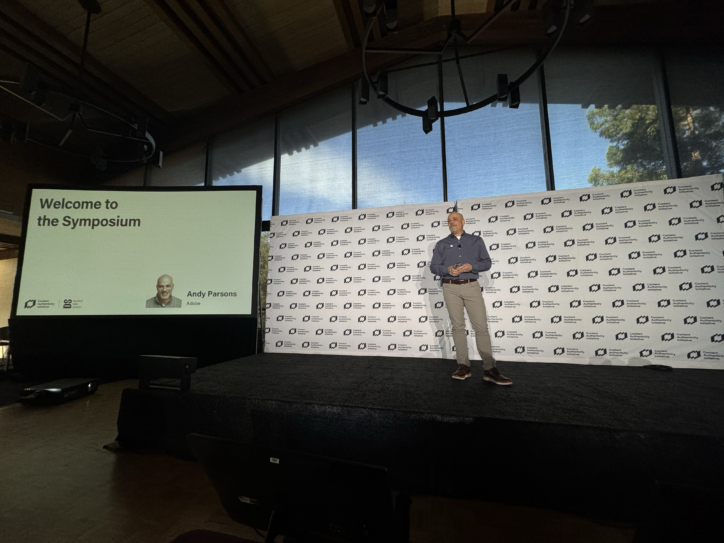
Restoring Transparency and Trust Across Our Digital Ecosystem in the Age of Artificial Intelligence
On December 7, 2023, I was honored to attend and join the 200 attendees at the Content Authenticity Initiative (CAI) Symposium that took place at Stanford University in collaboration with Adobe, CAI, and Stanford Data Science. As a proud CAI member, it was an eye-opening and inspiring day spent meeting and learning from leading A.I. developers, technologists, human rights experts, and academics who discussed the implications of A.I.-driven misinformation and the need to drive collective action, including the adoption of the C2PA Content Credentials global standard.
In 2023, GenAI captured the world’s imagination, and as A.I. becomes more powerful and prevalent, there’s an urgency to bring trust to digital content. The need for digital provenance and clear, simple, verifiable “nutrition labels” to combat misinformation is more important than ever.
2024 is going to be a PIVOTAL year for democracy with over 40 national elections taking place globally. This means that more than half the world’s population — over four BILLION people — will have the opportunity to vote. 2024 will see more people vote than any previous year, and we won’t see another election year like this for a quarter of a century. Of course, one of the most consequential elections for the planet will be the one that takes place in the United States as the impact will reveberate globally.
The urgency to bring trust and transparency to the content we consume online has never been more pressing, especially in an era of GenAI enabling the proliferation of mis- and disinformation at an unprecedented scale.
In today’s blog post, we’re highlighting the presentation “Authenticity and Defending Human Rights: Getting It Right” by Sam Gregory who is the Executive Director of the global human rights organization WITNESS.
“🔔 + Deepfakes hype is turning to reality globally as we head into election-palooza 2024
➡ Now must get expanding authenticity infrastructure right – as goes niche to mainstream with legislation + tech.” –Sam Gregory
A heartfelt thanks to Andy Parsons, Madeleine Burr, and Coleen Jose at Adobe and the CAI for the invitation to attend.
Stay tuned for more recaps, and consider joining me and over 2,000 other CAI members today: https://contentauthenticity.org/membership.
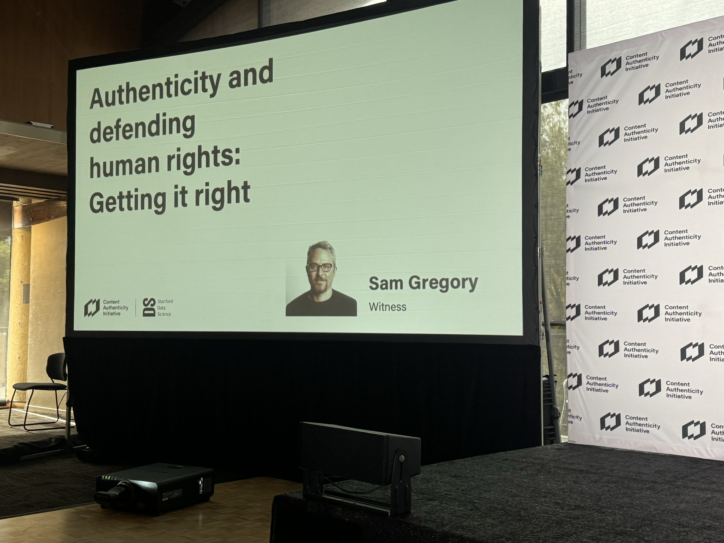
Authenticity and Defending Human Rights: Getting It Right
Sam Gregory, WITNESS
Sam Gregory is the Executive Director of WITNESS, an international nonprofit organization that helps people use video and technology to protect and defend human rights.
Sam is an award-winning human rights advocate, technologist, and innovative leader with over 25 years of experience at the intersections of video, technology, civic participation, and media practices. As Executive Director, Sam leads the organization’s five-year strategic plan to “Fortify the Truth” and champions our global team of activists and partners who support millions of people using video and technology globally to defend and protect human rights.
Sam took the stage at the CAI Symposium to share more about the vital work that WITNESS does, the current landscape we find ourselves in, and what needs to be done when it comes to media authenticity to protect people’s human rights in the age of artificial intelligence.
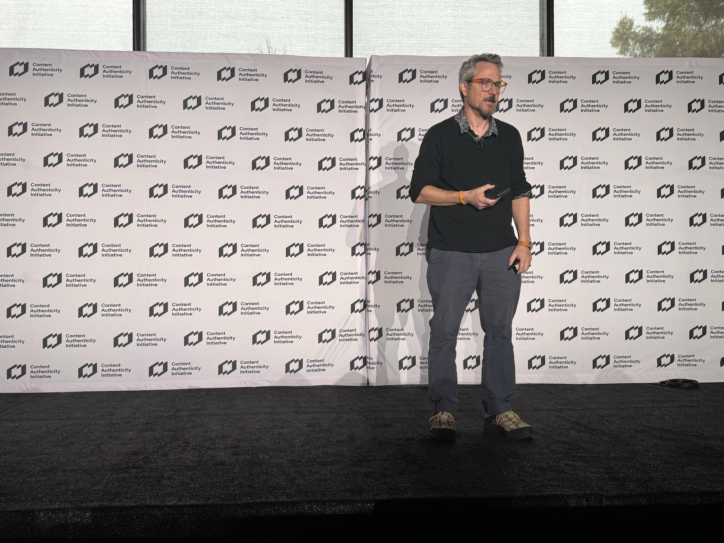
“💭 So…Human rights defenders have always grappled with challenges around trust in their evidence (and threats to them that require balancing visibility and protection). They’ve grappled with harmful shallowfakes for years.” –Sam Gregory
1. Human Rights Context and Media Authenticity: Sam began by contextualizing the importance of authenticity in human rights work. He described the challenges faced by human rights defenders and journalists, particularly in verifying the authenticity of crucial documentation amidst widespread misinformation and risks to personal safety.

2. Witness’s Role in Media Authenticity: Witness, an organization that supports human rights activists using video technology, has been deeply involved in the space of media authenticity. They have been proactive in addressing the challenges posed by deepfakes and generative A.I. to ensure the credibility of critical societal documentation.

3. Three Areas of Focus: Sam outlined three areas of focus: understanding how human rights work intersects with authenticity, observing the impact of generative A.I. on authenticity, and exploring future strategies to enhance authenticity in human rights contexts.
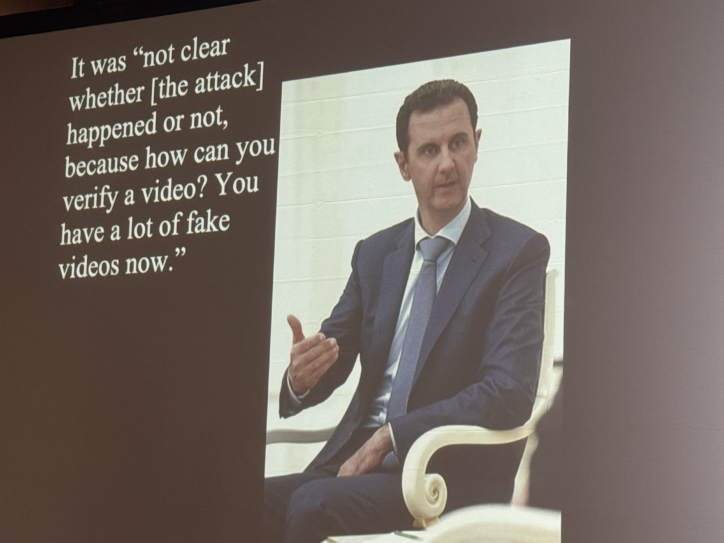
“🔔 There IS interest in provenance, watermarking etc among frontline HRDs/journalists.
🔔 But caveated! As a signal, not the signal, to fortify their work but only with nuanced design and implementation efforts to ensure global applicability, avoid centralized control and to protect human rights.
🥁And ensure approaches don’t unfairly shift the burden of proof to make it even harder for marginalized voices to be heard.” –Sam Gregory
4. Challenges of Verification and Misinformation: One significant issue highlighted was the difficulty in verifying media content, especially in hostile environments. Sam discussed instances where crucial human rights footage was dismissed as fake or manipulated, illustrating the need for reliable verification tools.
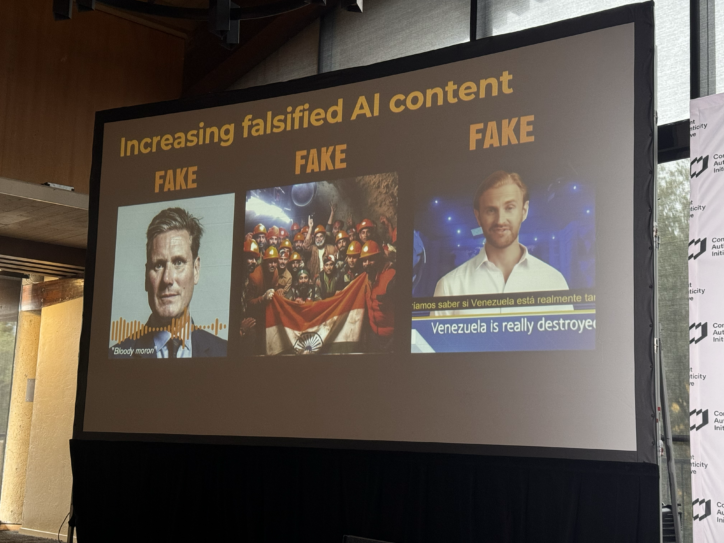
“💭 This needs to be about the HOW not the WHO of AI-media making: need to insist that tech protects privacy, opt-in, and not collect by default personally-identifiable information.
➡ For content that is not AI generated, we should be wary of how a provenance approach misused for surveillance and stifling freedom of speech.
🥁Tools must be built and legislated with attention to the global environment: attempts to pass fake news laws intrusive surveillance, and likelihood that ‘deepfake’ laws will entrench democratic drift.
➡ We must not repeat mistakes of the social media era and place overwhelming responsibility to navigate harms on the user.” –Sam Gregory
5. Evolving Threats from Generative A.I.: Sam noted the growing concern among journalists and human rights activists about the increasing sophistication of A.I.-generated false content. This evolution calls for more effective solutions to authenticate media and safeguard against misinformation.
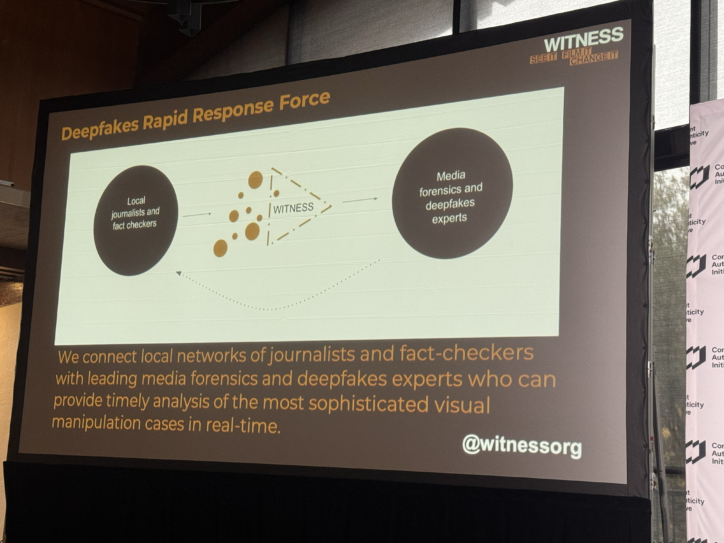
“🔔 Tools and options for authenticity infrastructure need to be available broadly, with diverse ecosystem including open-source, options for high-risk environments and diverse global settings and constraints, and outside big tech.” –Sam Gregory
6. Gap in Access and Skills for Detection: A notable point was the disparity in access to media detection tools across different regions. Sam emphasized the need for providing training and resources globally to enable effective media authentication, particularly in less-resourced newsrooms.
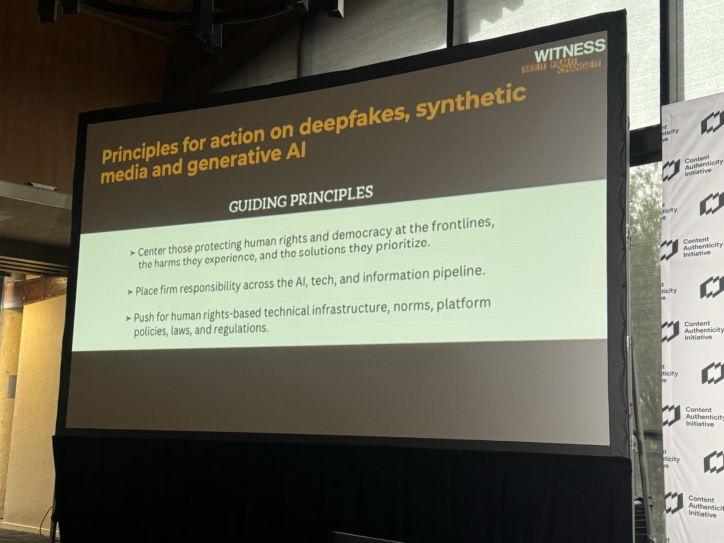
“🥁 3 grounding principles: Center most vulnerable and those on frontlines of reliable information; insist on firm accountability and responsibility across the broader AI pipeline; and start with human rights as the basis for legislation, policy and tech implementation” –Sam Gregory
7. Principles for Defensible Technology: Sam presented three principles for developing defensible technology: centering those protecting human rights, placing responsibility across the tech and A.I. pipeline, and pushing for human rights-based infrastructure and regulations.
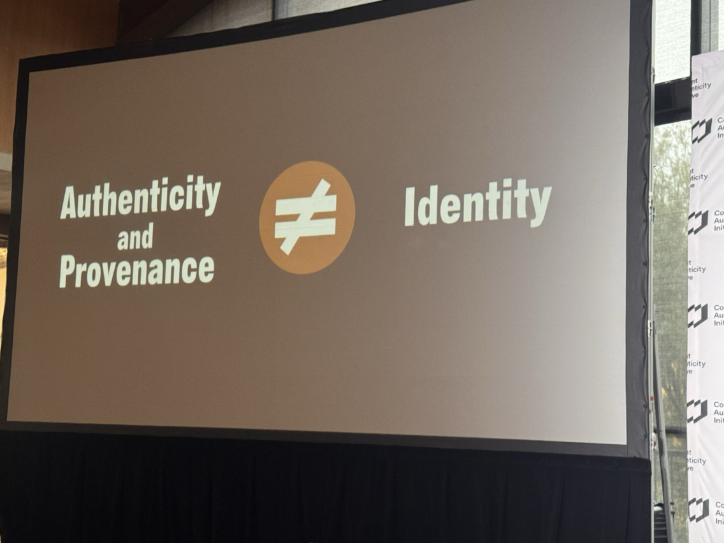
“➡ Identity can’t be core of authenticity and trust (see lessons learned on citizen journalism and vulnerable HRDs, as well as attempts to suppress satire and political dissent)” –Sam Gregory
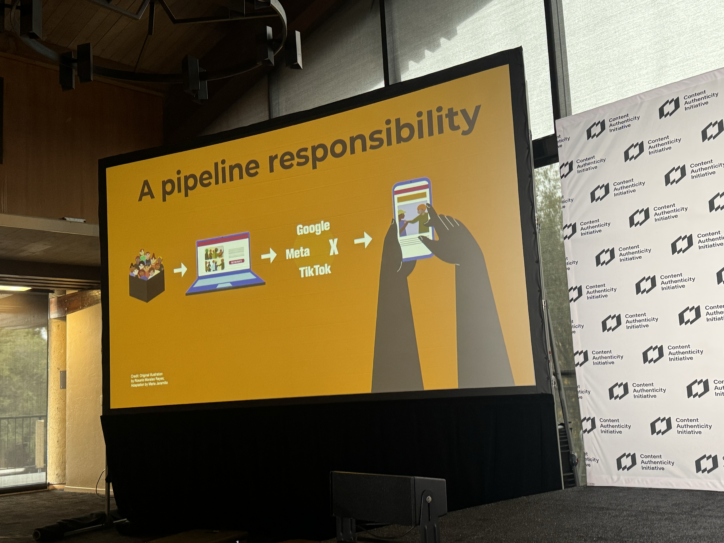
“🥁Must be a pipeline of participation and responsibility…from AI foundation models and developers of open source projects to deployment in apps, systems and APIs to platforms to distribution.
🏹 And we need to always repeat question – ‘on whom this does this redistribute the burden of proof and trust?’” –Sam Gregory
8. Importance of Nuanced Design in Authenticity Tools: The discussion highlighted the need for authenticity tools to be designed with global applicability, avoiding centralized control, and protecting human rights while not unfairly shifting the burden of proof.
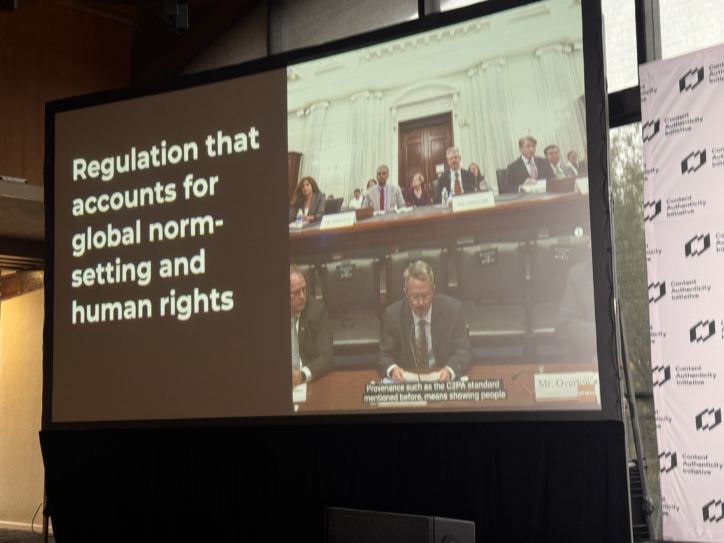
9. Regulation and Global Impact: Sam stressed the global impact of regulations and norms set in the US and EU, cautioning against potential abuses in less democratic regions. He urged for regulations that consider the broader implications for human rights and democracy.
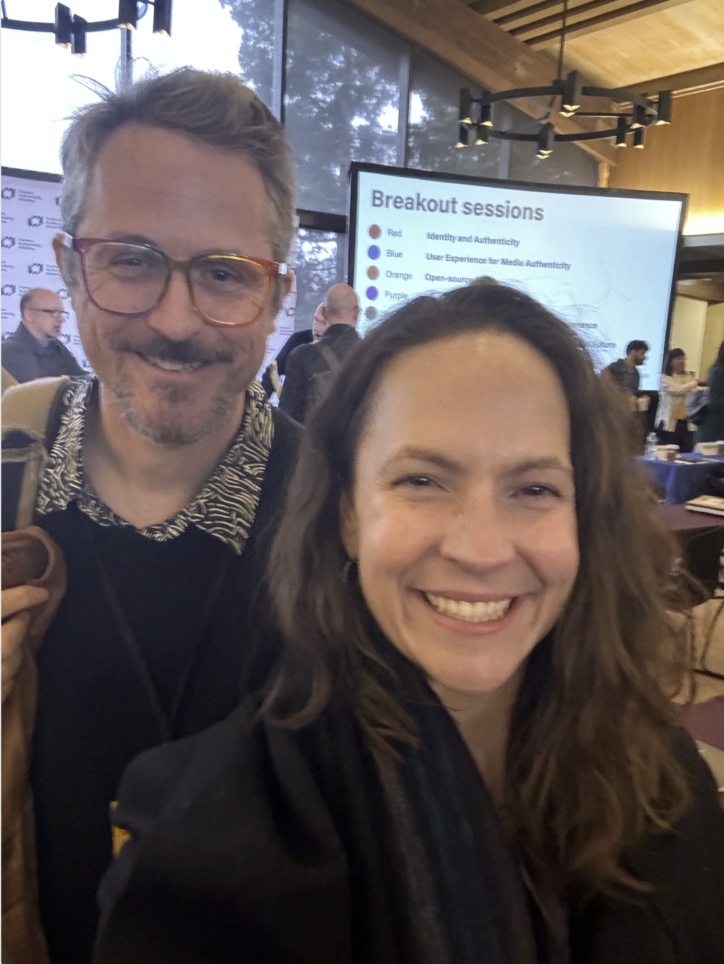
“As I half-joked at the end, authenticity and provenance infrastructure is not a silver bullet, more like a rusty musket. But even with that, it will have power, and we must get it right….” –Sam Gregory
10. Future of Authenticity Infrastructure: Looking ahead, Sam called for a diverse ecosystem of tools for authenticity infrastructure, including open-source options and those fitting diverse global settings. This approach is vital to decentralize trust and support frontline human rights voices.
Sam’s insights shed light on the intricate relationship between media authenticity, human rights, and safety. His call to action emphasizes the necessity of nuanced, globally applicable tools and regulations that prioritize human rights while addressing the evolving challenges posed by A.I.-generated media. As the landscape of media authenticity evolves, the principles outlined by Sam serve as essential guidelines for ensuring that the truth is both protected and respected in the digital age.
Here’s a very recent TED Talk that Sam did on this subject too:
Check out our Creativity Squared podcast interview with Andy Parsons who is the Senior Director of Adobe’s Content Authenticity Initiative (CAI) to learn more about the movement:
